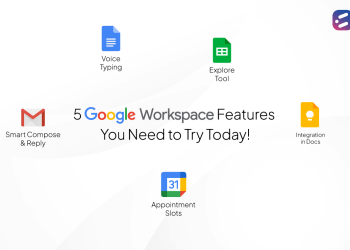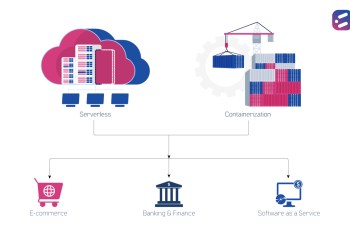One of the major shifts in the approach to software development is the move from monolithic, single-block applications to highly granular microservices based applications. This fundamental transformation in the way software is built does bring with it many benefits, but it does pose some challenges as well.
Therefore, before getting into the details of how the move from monolithic to microservices can be made, I would like to first share a basic understanding of the concepts of Monolithic Applications and Microservices Applications built on SOA, and their comparative advantages and disadvantages.
Monolithic Applications
Monolithic Applications, as their name suggests, refers to a ‘very large, united, and difficult to change’ application artifact.
Pros
- Requires only single artifact deployment, meaning just one artifact file needs to be copied to the deployment environment
- Enables easy automation testing on the single app artifact
- Makes horizontal scaling possible by running the copies of artifacts on different nodes behind the load balancer
- Continues to be the architecture used for a large set of applications even in recent years
Cons
- Requires time to understand the code and work on bug fixes and enhancements in medium and larger applications
- Takes longer application startup time since all the different components and their dependencies need to be started
- Makes adopting the latest security frameworks difficult as it may lead to huge effort and cost
- Requires testing of the whole application even for smaller enhancements or bug fixes to confirm the stability of the build
- Affects functioning of the whole application even in case of a memory leak in one component
- Makes management of applications very difficult from a CI and CD perspective, as even a smaller enhancement or bug fix takes a large amount of deployment process time
Microservices Applications
Microservices Applications make use of small, independent artifacts that run in their own deployment environment and can communicate with other artifacts of the application to deliver the required features to the end user.
Pros
- Decouples the large code base into smaller code bases so that maintainability of the code is easy for the project teams – this allows each team to focus on the development and maintenance of their service component, and brings in better agility in the development process
- Enables faster startup and response times as the components are deployed independently and run in their own space
- Delivers independence of framework and language from that used by other microservices of the project – so, the team can choose framework and language based on the need of their own microservice
- Ensures that even in the case of failure of one microservice, the whole application is not brought down, as the other microservices continue to run and serve requests – so the microservice that failed can be fixed and re-deployed
- Suited the DevOps cycle perfectly
Cons
- Requires careful analysis while implementing changes in functional requirements that affect multiple services
- Poses challenges in testing of inter-dependent services if the design was not done correctly
- Requires high-level automation for microservices integration, deployment and monitoring process
Moving from Monolithic to Microservices architecture
Given its numerous inherent advantages, the move from Monolithic to Microservices architecture is now all but inevitable. In a nutshell, at most times, building a medium or larger application involves complexity. Adopting Microservices Architecture with better planning and design can help to reduce this complexity.

CloudNow’s Approach
Step 1

Step 2

Note: The technical design document covers the following details:
- Intercommunication of existing monolithic app modules
- Dataflow, boundaries and application context
- Existing deployment architecture
Step 3

CloudNow can help you with the migration of your monolithic applications to a microservices platform. Get in touch with us today to see how your application development processes can benefit from our expertise.













